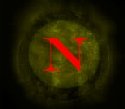 Isaac Merritt Singer designed and perfected the first practical sewing machines in a small Boston, Massachusetts machine shop. It took only 11 days and $40 in borrowed capital for him to create the sturdy lock stitch sewing machine that would revolutionize sewing across the globe. The following are some highlights in the history of the Singer Sewing Company and Singer sewing machines and indications for why antique sewing machines are in such great demand.
Isaac Merritt Singer designed and perfected the first practical sewing machines in a small Boston, Massachusetts machine shop. It took only 11 days and $40 in borrowed capital for him to create the sturdy lock stitch sewing machine that would revolutionize sewing across the globe. The following are some highlights in the history of the Singer Sewing Company and Singer sewing machines and indications for why antique sewing machines are in such great demand.From 1850 to 1851, Orson C. Phelps of Boston was manufacturing sewing machines under license from John A. Lerow. The Lerow and Blodgett machine was not very practical. The circular movement of the shuttle took a twist out of the thread at every revolution. Isaac Merritt Singer, after examining the sewing machine, noted "instead of the shuttle going around in a circle, I would have it move to and fro in a straight line. In place of the needle bar pushing a curved needle horizontally, I would have a straight needle and make it work up and down."
After 11 days of work and forty dollars in cost, Singer completed his invention: the world's first practical sewing machine. This sewing machine had a straight eye-pointed needle and transverse shuttle, an overhanging arm, a table to support the cloth, a presser foot to hold the material against the upward stroke of the needle, and a roughened feed wheel extending through a slot in the table. Motion was communicated to the needle arm and shuttle by means of gears. In 1851 Singer patented his lock-stitch sewing machines and began production in Boston. He joined forces with New York lawyer Edward C. Clark to form I. M. Singer & Company.
NOVA-Antiques Newsletter Archive - June 29, 2006 . . . .



No comments:
Post a Comment